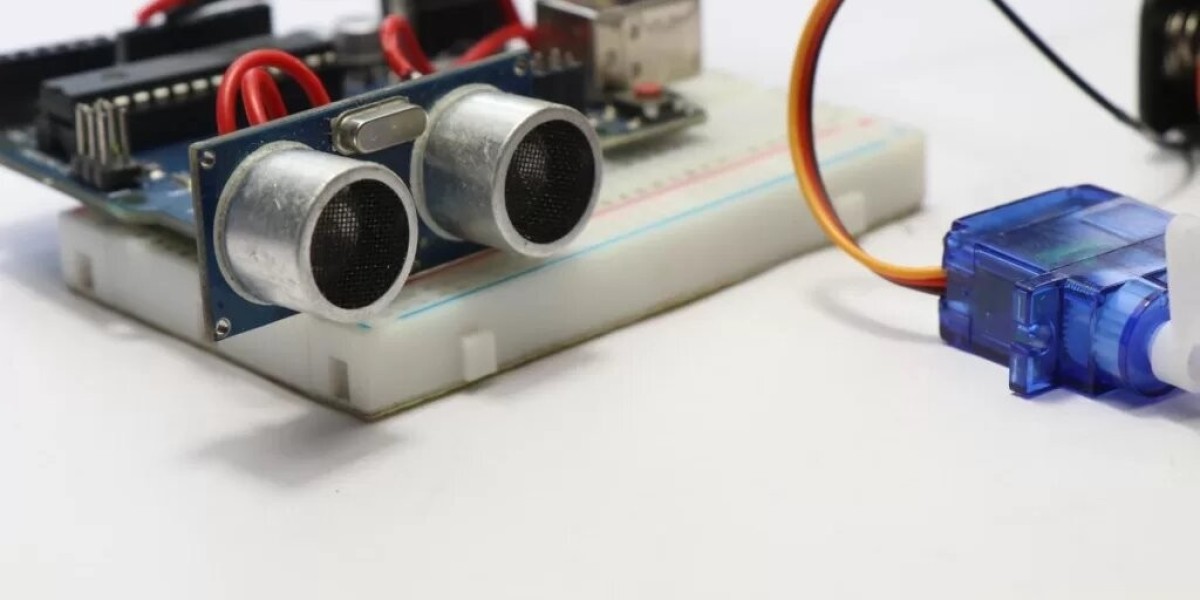In this blog post, we will explore the fundamentals of ultrasonic sensors, their working principles, and the diverse applications that make them indispensable in modern technology.
What Are Ultrasonic Sensors?
Ultrasonic sensors are devices that emit high-frequency sound waves (typically above 20 kHz) and measure the time it takes for the sound waves to bounce back after hitting an object. This time of flight is then converted into distance, allowing the sensor to determine how far away the object is located. Ultrasonic sensors are often used in various applications, including distance measurement, object detection, and level sensing.
How Do Ultrasonic Sensors Work?
The working principle of an ultrasonic sensor can be broken down into a few simple steps:
Emission of Sound Waves: The sensor emits a pulse of ultrasonic sound waves in a specific direction. These sound waves travel through the air at a known speed, usually around 343 meters per second (in ideal conditions).
Reflection of Sound Waves: When the emitted sound waves encounter an object, they bounce back towards the sensor. The nature of the object (size, shape, and surface) can affect the strength of the reflected sound waves.
Reception of Sound Waves: The sensor has a receiver that detects the reflected sound waves. The time taken for the sound waves to return to the sensor is measured.
Distance Calculation: Using the time of flight and the speed of sound, the sensor calculates the distance to the object. The formula used is:
Distance=(Speed of Sound×Time2)\text{Distance} = \left(\frac{\text{Speed of Sound} \times \text{Time}}{2}ight)The division by two accounts for the sound waves traveling to the object and back to the sensor.
Applications of Ultrasonic Sensors
Ultrasonic sensors are incredibly versatile and are used in a wide range of applications, including:
Automotive Industry: They are commonly found in parking assistance systems, where they help drivers detect obstacles and prevent collisions.
Robotics: Ultrasonic sensors are widely used in autonomous robots for navigation and obstacle avoidance, enabling them to detect and maneuver around objects.
Industrial Automation: In manufacturing, ultrasonic sensors are used for level sensing in tanks and containers, ensuring that materials are monitored and managed efficiently.
Home Automation: Smart home devices utilize ultrasonic sensors for motion detection, enhancing security systems, and automating lighting based on occupancy.
Healthcare: In medical settings, ultrasonic sensors are used in devices such as ultrasound machines to create images of internal body structures.
Advantages of Ultrasonic Sensors
Ultrasonic sensors offer several advantages over other types of sensors:
Non-Contact Measurement: They can measure distances without physical contact, making them ideal for various applications.
High Accuracy and Precision: Ultrasonic sensors provide accurate distance measurements, which is crucial in applications where precision is key.
Robustness: They can operate in challenging environments, such as extreme temperatures and dusty or humid conditions.
Conclusion
Ultrasonic sensors are an essential technology that continues to evolve and find new applications across various industries. Their ability to measure distances accurately and detect objects without physical contact makes them invaluable in a world increasingly reliant on automation and smart technologies. As technology advances, we can expect even more innovative uses for ultrasonic sensors in the future, paving the way for smarter, more efficient systems. Whether in manufacturing, healthcare, or everyday consumer products, ultrasonic sensors will undoubtedly play a vital role in shaping our technological landscape.



